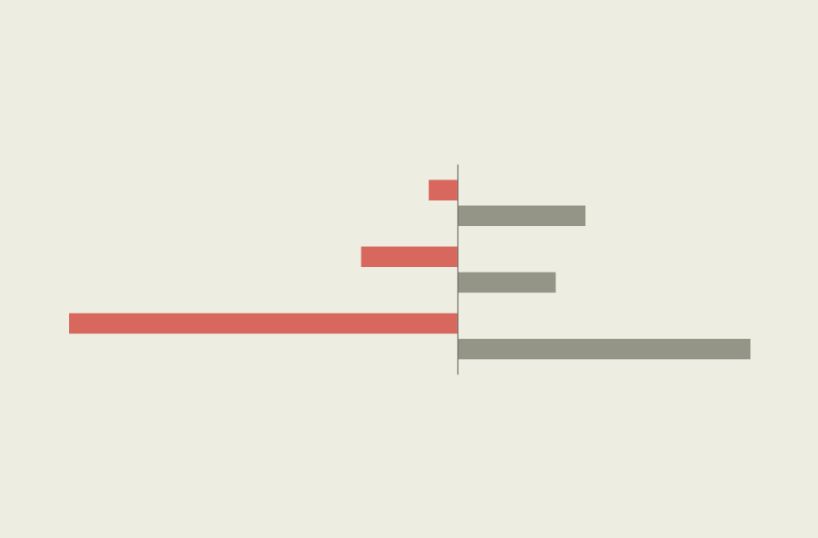Rousseff Takes on the Infamous “Brazil Cost”
Rousseff Takes on the Infamous “Brazil Cost”
Brazil’s president is taking an ad hoc approach to tax reform, hoping to boost the economy by trimming bureaucracy and complex tax rules.
As Brazil’s economy faces the effects of the eurozone crisis, President Dilma Rousseff hopes to take on one of the country’s most daunting economic obstacles, known as the “Brazil cost.” Many argue this combination of bureaucratic hurdles, complex taxes, and insufficient infrastructure has hindered the country’s growth and made Brazil less competitive. Rather than attempt comprehensive tax reform—which her predecessor could not accomplish—Rousseff is turning to an ad hoc approach, using provisionary measures and cutting taxes for individual industries.
Taxes are one of the largest components of the Brazil cost. The World Bank’s 2012 Doing Business report ranked Brazil as one the most difficult countries in the world to file taxes; the average company spends 2,600 hours per year determining the amount of taxes owed. (For a comparison, the overall average for Latin American and Caribbean countries is 382 hours per year). In addition, a recent Deloitte study found that Brazil is the most expensive Latin American country to run a business. The country’s tax burden stands at 36 percent of GDP, though The Economist argues that: “Most of the money goes on over-generous pensions and wastefully big government, rather than transfers to the poor.”
Continued signs of a cooling economy make Rousseff’s mission all the more important. Economic activity has been in decline since December, and the eurozone crisis is causing foreign credit to slow. Industry leaders in São Paulo, the state with the largest economy in the country, anticipate that manufacturing will shrink this year. Though Brazilian exporters welcomed the strengthening of the dollar last week—pushing the real to above $2 for the first time in three years—experts warn the export-friendly exchange rate wouldn’t be a panacea. “In the medium- and long-term, the determining factor for export competitiveness isn’t the dollar, but rather the Brazil cost,” economics researcher Guilherme Mercês told Jornal do Brasil.
Consequently, Rousseff took various steps over the past few months to tackle the Brazil cost. In March, Trade Minister Fernando Pimentel said the government seeks to create a “single window” system that centralizes bureaucracy for importers and exporters, reducing red tape. In late March, Rousseff passed two provisionary measures to stimulate industry, including a $960 million package for exporters. She offered a payroll tax cut for several industries in early April, including auto-part manufacturers and textile makers. On May 18, the president signed a law to reduce airport taxes on airlines and passengers, reducing one such tax from 50 percent to 35.9 percent. Last week, government officials said there were plans to reduce taxes on the electricity industry. On Monday, the government announced temporary tax cuts on car purchases and auto loans, since auto sales have slowed.
One of Rousseff’s main targets, however, is interest rates. In April, she urged private banks to lower interest rates in a bid to expand consumption in a slowing economy. “It’s unacceptable that Brazil, which has one of the most solid and lucrative financial systems, continues having one of the highest interest rates in the world,” Rousseff said. Government-run Caixa Economica and Banco do Brasil both lowered their rates last month, followed by private banks Bradesco, HSBC, Santander, and Itau Unibanco.
In early May, Rousseff issued a decree to lower returns on new savings accounts deposits, allowing the Central Bank to further decrease interest rates. It was a risky move to touch bank accounts, given that it is an election year and that few have forgotten the 1990 Collor Plan, which froze savings accounts altogether. Rousseff justified the change as a way to lower interest rates; as a result of the decree, real interest rates fell to 2.5 percent—the lowest level since 1994. Manufacturers appreciated the move, since high interest rates form part of the “Brazil cost” hurting the industrial sector. Finance Minister Guido Mantega defended it, saying: “It’s not politics that’s driving us, it’s the will of the Brazilian people, who want more economic growth, more jobs.”
Learn More:
- Read about the change to savings accounts from IstoE Dinheiro.
- Read about the Brazil cost in a recent Brazil economy overview from The Economist.
- Learn about Rousseff’s ad hoc tax reform approach in an article from Reuters.
- Read an op-ed about Brazil’s economic potential amid a slowdown from Foreign Policy.







